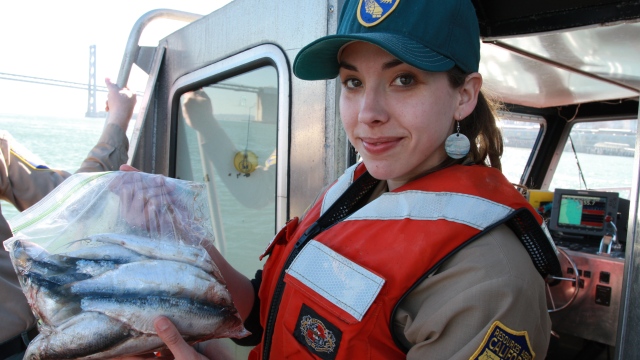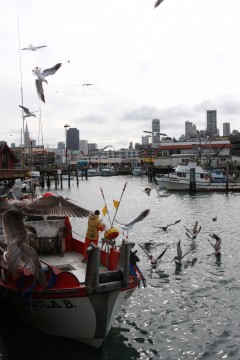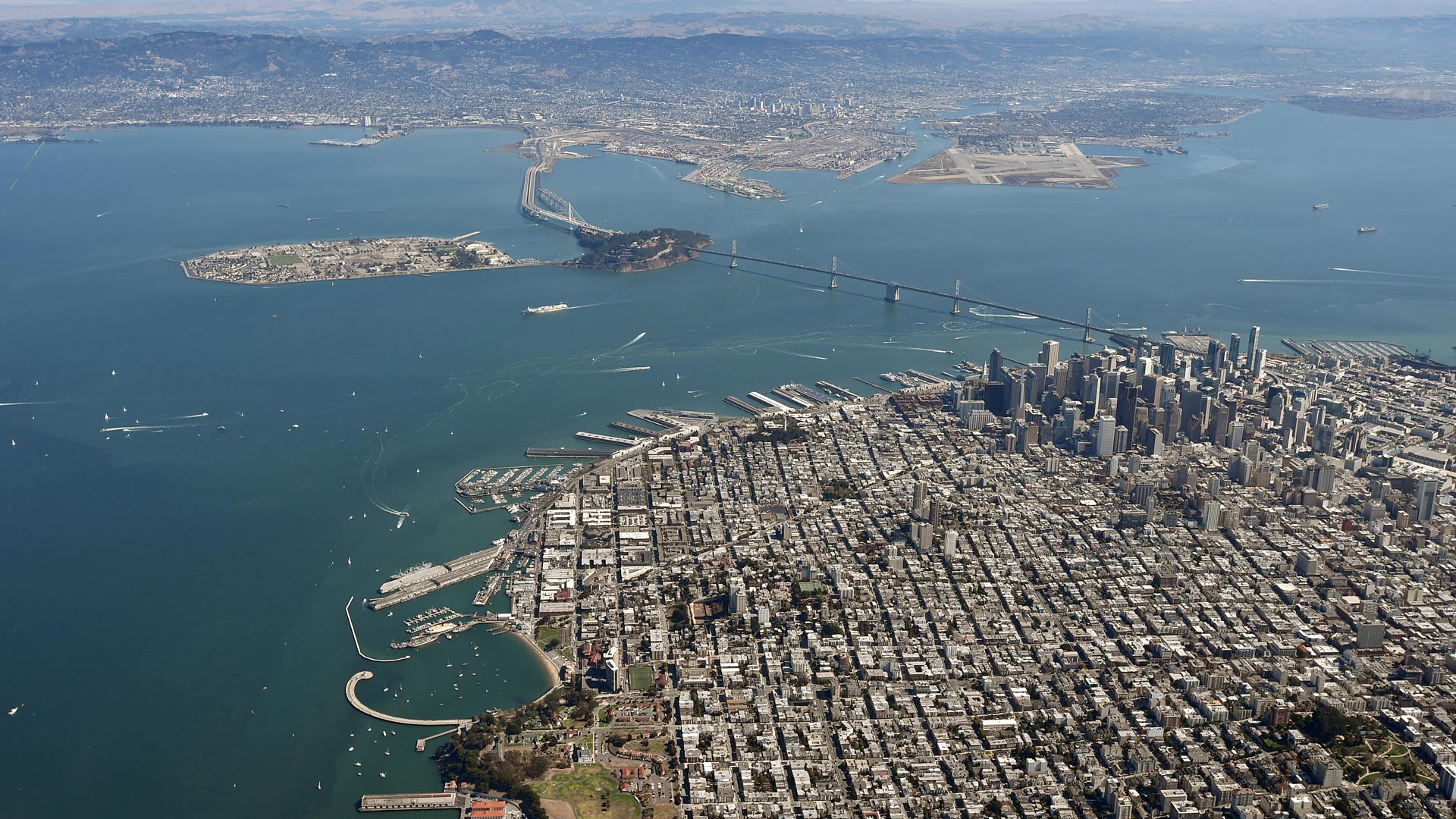Struggling Herring Make a Tiny Appearance
Struggling Herring Make a Tiny Appearance

If you are a seafood lover, you are no doubt aware when the salmon or crab season begins. But late February marks the end of herring season. Herring are one of those small silver fish unceremoniously referred to as “bait fish.” Small fish like herring are the critical base of the marine food chain and, without them, there would be no bigger fish.
Not that long ago California’s herring population came perilously close to collapse. While their numbers are increasing, herring in the Bay are still struggling to return to their once prolific numbers.
The Fleet
San Francisco’s herring fleet is the last commercial fishery that chases its fish almost exclusively in San Francisco Bay. Captain Ernie Koepf has plied the Bay in his boat, The Ursula B, for 35 years. He offloads six tons of herring on a cool Monday morning behind Pier 45. Little shimmery scales line his wool cap.
The herring is sucked out the boat’s hold by a giant orange vacuum that then spews it onto a conveyor belt while dozens of screeching gulls hover overhead. From there, the fish is dumped into boxes full of ice, shipped off -- often overseas -- then ripped open to get at the golden eggs, called roe, that are a delicacy in Japan.
Near Collapse
Four years ago, there almost was no roe to enjoy. California nearly lost its herring population. Scientists believe a lack of food sources in the ocean and warming water caused the numbers to shrink by ninety percent. Government decisions to close the herring season and impose strict catch limits helped to bring back some of the herring, but now there is a new problem: The little silver fish are getting inexplicably tinier. It’s getting tougher to find older, more valuable herring.
“In fact, there’s been a very, very dramatic decrease in the age distribution of the population,” says Audubon biologist Anna Weinstein.
“So what that means really is that the herring that are spawning now in San Francisco, and other parts of California, are almost all two and three year-old fish. Well, what’s wrong with that? This is a fish that lives to be 10 to 13 years old and is a multiple year spawner and the eggs of older fish tend to be better quality eggs. A whole population made up of younger fish is a classic sign of stress in fisheries.”

Signs of stress in herring have conservationists like Weinstein worried. Herring is a critical food source for the ocean’s bigger fish. These little fish, also known as forage fish, are in decline globally. In fact, some conservation groups are so concerned about the state of West Coast anchovy and sardines, that they took the National Marine Fisheries Service to court this month in San Francisco. The suit is asking for stronger fishing regulations on forage fish.
While herring aren't included in the current lawsuit, Audubon and Earthjustice have expressed concern about how California’s Department of Fish and Wildlife are managing the state's herring stock.
“It’s definitely something the department is concerned with,” says Fish and Wildlife's Tom Greiner. He and his team fish for herring samples on the Bay to take back to the lab. But Greiner says the mystery of the missing older generations isn’t unique to San Francisco — which makes solving the problem tricky.
“It’s actually a coast-wide concern,” he says. “Including areas that aren’t even fished. So if we only had it in fished populations, then we’d assume it was overfishing. But the fact we’re seeing it in populations with no fishery makes us think there’s a different cause. We’re not sure”
To make matters worse for San Francisco’s herring fisherman, prices for roe in Japan are sliding. It’s partly competition from herring fishermen in Canada and Alaska and it’s partly due to demographic shifts in Japan where the population is eating more Western-style food.
Let Them Eat Herring
But some Bay Area chefs are interested in the plight of herring and they have an idea. It’s a counter-intuitive one. To save herring, they say, eat them.
“The solution is to eat herring,” says Kenny Belov, co-owner of Fish restaurant in Sausalito. “The solution is not to wipe out the population and ship it halfway across the world. We wouldn’t do any damage by leaving the fish in the Bay and taking less, higher quality, giving it to chefs that want to use the entire protein -- from the roe to the filet to the bones. All of it.”
Belov says the notion of eating the local, seasonal fish is creating a buzz among area chefs. He explains chefs are pickling it, curing it, grilling it and serving it fresh. “And they’re getting their customers asking for it,” he says.
While the demand for herring in the Bay is still pretty low, the foodie plan might just reduce the pressure on an already stressed fish. Last year, local herring fishermen like Koepf got twice as much per pound for herring bound for local plates as for those headed to Japan.
